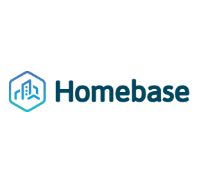Guest Post by Audio Analytic
Sound Recognition adds a powerful dimension to the intelligence of consumer devices, making it essential to every smart home ecosystem. So what exactly is Sound Recognition?
The Problem: What if no one is listening?
Just imagine: what if there is a sound in your house - and no one is there to hear it? A baby crying, a window being broken, smoke and carbon monoxide alarms going off... All sounds have a story to tell. Whether you’re napping, at work, on holiday or just outside for a moment, you want to know what’s happening at home.
Many smart home products rely on simple physical sensors or video imagery to monitor adverse and anomalous events. A small number of devices will report if a noise happens, but they can’t recognise the noise or inform the smart home so that appropriate and immediate actions can be taken.
Sound Recognition can do all this - and more.
The Solution: The sound-enabled smart home
Sound Recognition is the disruptive, game-changing technology that defines a new category in the smart home. With the use of a simple microphone, and some clever artificial intelligence software, Sound Recognition doesn’t just connect the home: it makes it smart. Sound Recognition not only hears a noise, but also goes several steps further to identify the noise precisely and tell the smart home what it is, so that pre-set scenes can be enacted and appropriate actions taken.
Sound Recognition delivers security, safety and comfort in the smart home: the software can, for example, recognise and action breaking glass, babies crying and alarms sounding across a range of international alarm patterns and tones, not just T3/T4. And the underlying technology can be used to recognise an infinite set of other sounds as well.
Here are some examples of how Sound Recognition works in practice:
-
In an empty house late at night, a burglar breaks a window to gain access. Sound Recognition detects and recognises the noise of shattering glass and sends an alert to the event management system powering the smart home, enabling it to contact the homeowner and respond in other ways, for example by instantly turning on lights and loud music to act as a deterrent. As part of an integrated smart home system, messages can also be sent to neighbours at the same time to inform them of a local break-in.
-
A baby cries out in her bedroom, while the rest of the family is fast asleep. Sound Recognition detects and recognises this sound as a baby crying, and instantly sets off a sequence of events. For example, the system may stream a quiet lullaby to soothe the child. If the crying continues for a period of time, Sound Recognition can send an alert to her parents via their wearables and turn on dimmed lights in their bedroom, so they can rise quickly and safely to get to their baby.
-
A home electrical appliance is left switched on by mistake as someone rushes out of the house for an important appointment. The unattended appliance continues to get increasingly hot over time. Hours later, the appliance bursts into flames; the smoke alarm sounds. Immediately, Sound Recognition detects and recognises the alarm and alerts the event management system. Messages are sent instantly to the homeowners, who can call the fire department on their way to the property.
The technology is now available to make all this happen - today. Requiring minimal CPU and memory, and no specialist hardware, Sound Recognition can be integrated into any smart home device or platform, making the sound-enabled home a reality.
Next: 63% of NFL Game Pass users signed up through their pay-TV provider
Previous: Educated consumers will discover what type of smart home works best: Insights from Icontrol Networks















